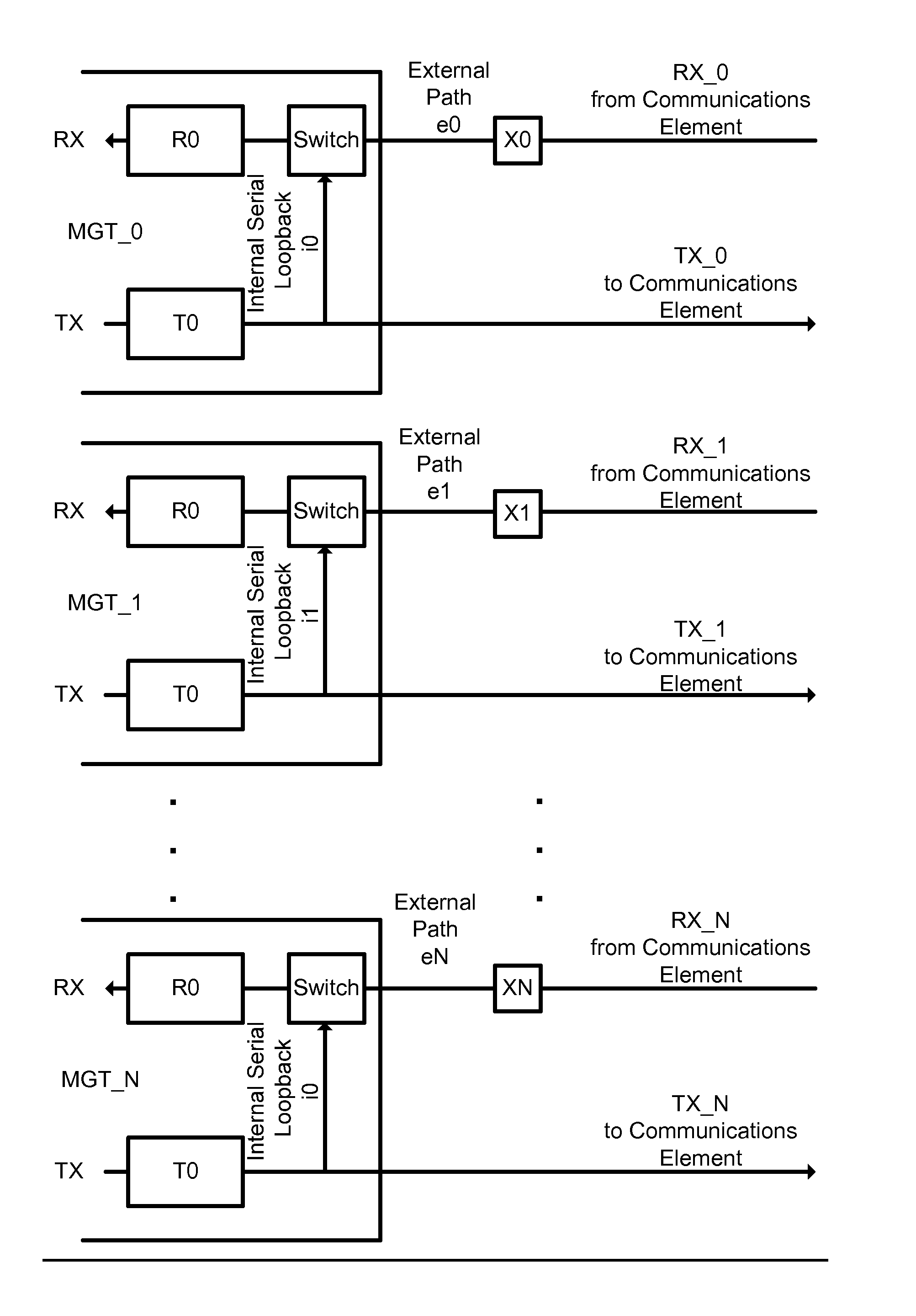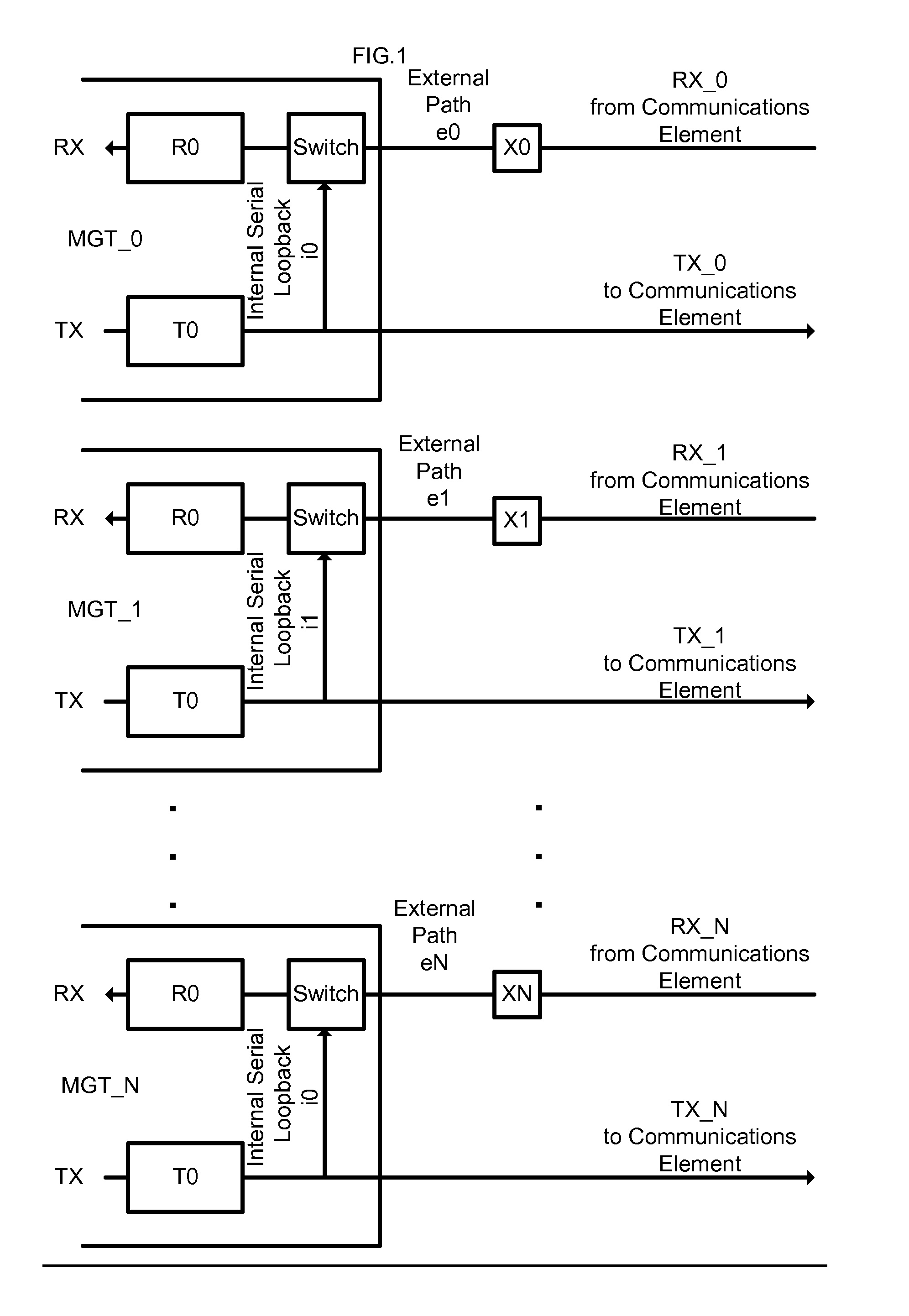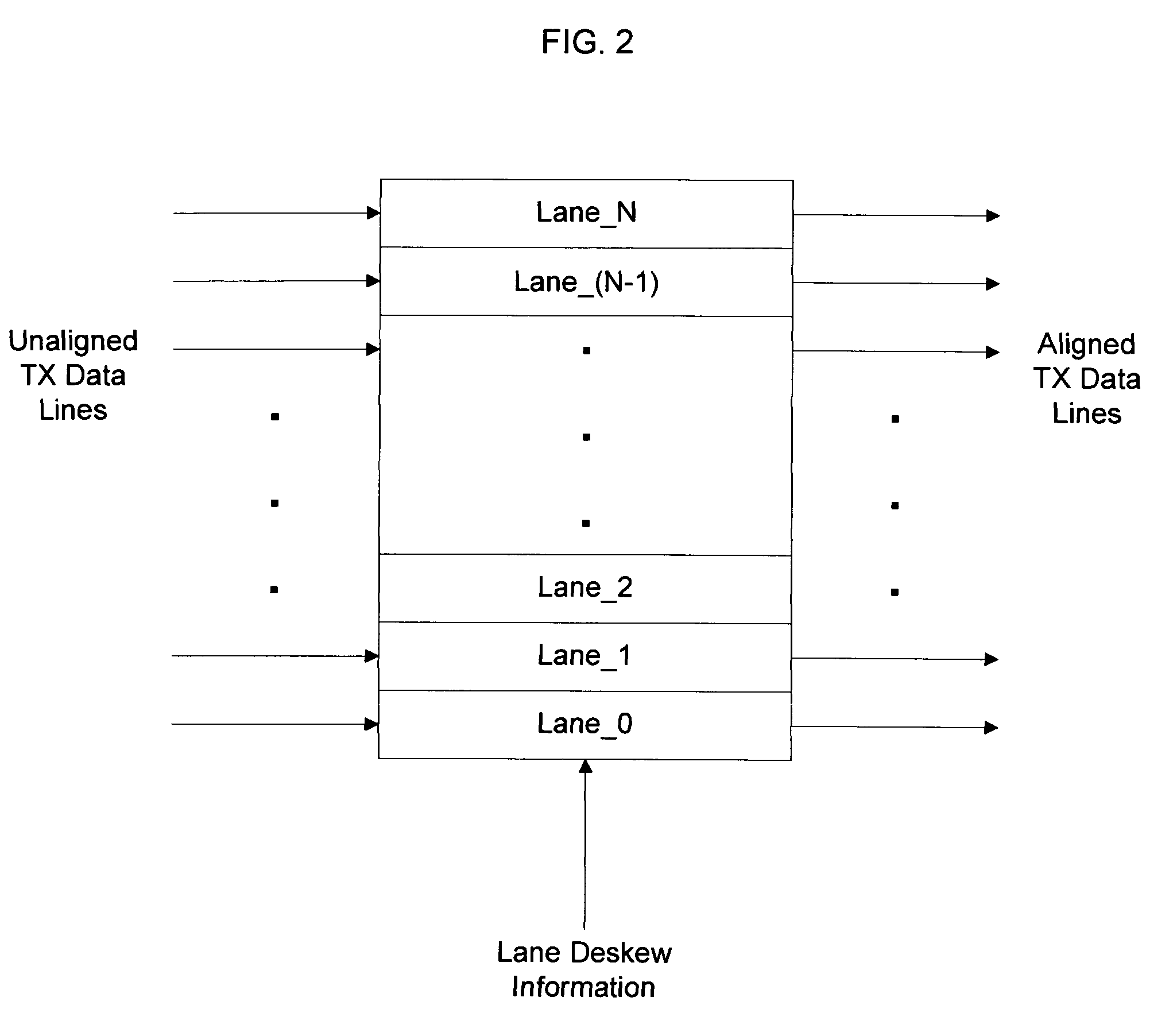Skew-correcting apparatus using external communications element
a communication element and skew correction technology, applied in the field of skew correction apparatus, can solve problems such as misalignment to the standard, different alignments of data bus lines, etc., and achieve the effect of eliminating any skew related problems
- Summary
- Abstract
- Description
- Claims
- Application Information
AI Technical Summary
Benefits of technology
Problems solved by technology
Method used
Image
Examples
example 1
Internal Loopback with Receive Path Information
[0022]The system in this case is implemented using internal loopback and the information collected from the receive path from a single transceiver, that information being looped back from transmitter to receiver in that transceiver via a switch in the receive path, as shown in FIG. 1. The skew data from each transceiver will be used in conjunction with the data from the other transceivers to determine skew between each lane, and thus be able to correct it.
[0023]In Example 1, internal loopback is used in conjunction with the receive path to determine the relative skew amounts for each lane as illustrated in FIG. 1. The variables and constants used in this example are defined as:
[0024]
Definition List 1TermDefinitionR0Unknown receive skew for MGT_0R1Unknown receive skew for MGT_1R2Unknown receive skew for MGT_2T0Unknown transmit skew for MGT_0T1Unknown transmit skew for MGT_1T2Unknown transmit skew for MGT_2X0Unknown external skew for path...
PUM
 Login to View More
Login to View More Abstract
Description
Claims
Application Information
 Login to View More
Login to View More - R&D
- Intellectual Property
- Life Sciences
- Materials
- Tech Scout
- Unparalleled Data Quality
- Higher Quality Content
- 60% Fewer Hallucinations
Browse by: Latest US Patents, China's latest patents, Technical Efficacy Thesaurus, Application Domain, Technology Topic, Popular Technical Reports.
© 2025 PatSnap. All rights reserved.Legal|Privacy policy|Modern Slavery Act Transparency Statement|Sitemap|About US| Contact US: help@patsnap.com



